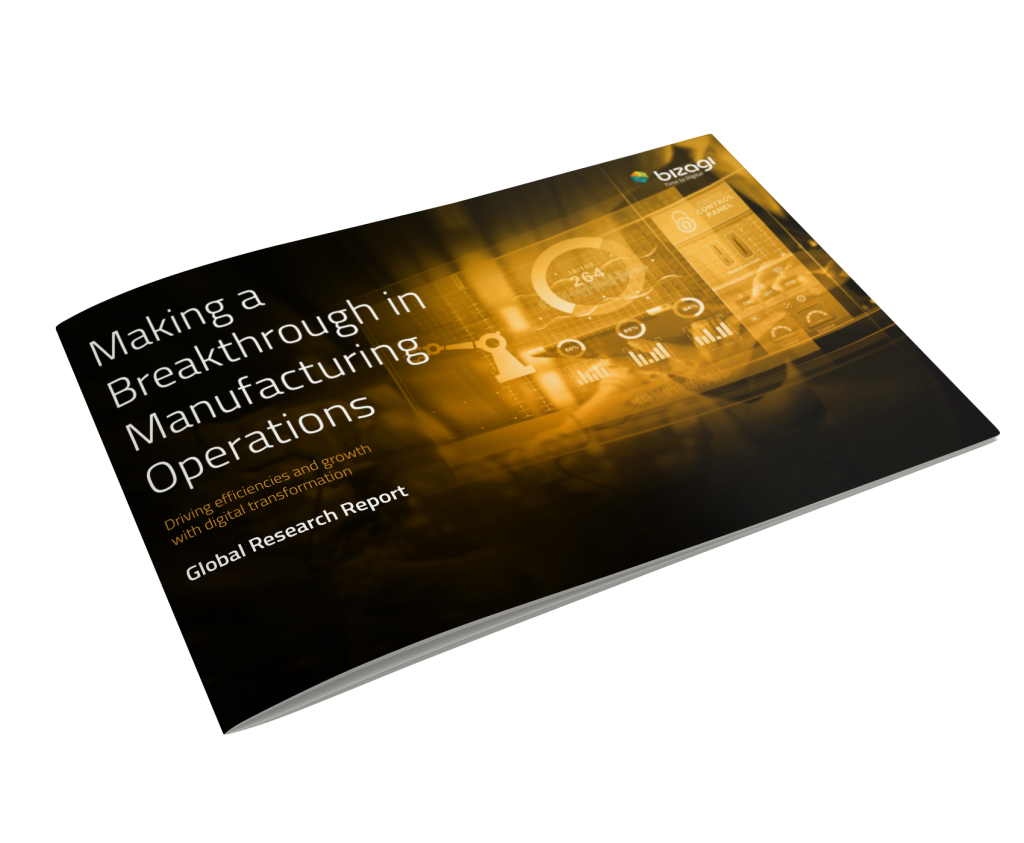4 Ways to Deliver Intelligent Automation in Manufacturing
Blog: Bizagi Blog
While the majority of manufacturing executives acknowledge
the importance of digital transformation, only 5% are satisfied with their
current digital strategies. With the advent of Industry 4.0, it’s more
important than ever for organizations to learn from their peers.
Intelligent automation initiatives are helping to create smart factories and introducing intelligence to manufacturer’s production lines and supply chains. To help you increase efficiency and improve customer service, and overcome the challenges faced along the way, here are four ways that are helping Bizagi customers around the globe.
1 – Create an agile
way of working to deliver results quickly
Start small, think big, scale fast was the approach taken by
multinational sports apparel manufacturer adidas. Starting with several small
automation projects in parallel, the employees can act as advocates and
demonstrate their results to others in the business. This is a quicker way to
highlight success. But these projects need careful consideration. It’s important
to discuss the requirements around a process model and use an agile methodology
as this forms the foundation of intelligent automation.
“We connect a lot of systems together with Bizagi. It’s
important to model the process first and then the online platform makes it more
user friendly for our customers,” said the Senior Process Automation Manager at
Adidas Group.
As a result of agile development cycles, adidas delivered new
workflow cycles in as little as 2 months, with 23 processes set live in just
two years. This helped to eliminate 1 million emails per year in the supply
chain, reducing operational cost by 60% and reduce factory onboarding time by
50%. All of this was accomplished in a third of the traditional development and
delivery time.
2 – Integrate your
systems to empower employees
A challenge that many organizations face is obtaining
visibility across their siloed systems. Not
only does it make it hard to view information for decision making, but
disparate systems often require access to the same data, so employees have to
enter it multiple times.
This was the case for Kyocera, who optimized their Excel and
email-based Special Pricing Approval system. By integrating their legacy
systems, SAP and Bizagi, they relieved employees of manual data entry tasks –
up to 20 minutes per approval – and provided clear numbers for them to make
better informed decisions when it came to managing their pipeline of 300
million Euros. The pricing approval could also be accessed via mobile through
Bizagi, making it possible to sign off on new purchases on-the-go, which
couldn’t be achieved previously via spreadsheets.
The management rationale of Kyocera is to ‘Provide opportunities
for the material and intellectual growth of all our employees.’ By reducing the
average pricing approval time by 85% with process automation this not only
accelerates turnaround to win more new business, but empowers employees to do
more with their working hours.
“The integration of Bizagi with our ERP system, SAP, was an
emotional breakthrough for our organization. It was not about convincing those
people their job had disappeared, but showing them how easy that task now is,
and providing them with opportunities to better spend their time,” said Kyohei
Shimada, Manager Digital Processes.
3 – Automate complex
processes to enable customizable solutions
Waste disposal truck manufacturer Geesinknorba deals with a
broad product portfolio, 99% of which are highly customized to the needs of
each customer. This dramatically increases the complexity of the organization’s
manufacturing process.
Interestingly, Geesinknorba flipped the popular concept of a
smart factory on its head. Instead they created ‘smart units’ to streamline
processes and improve efficiency. These act as a navigator through the
production process and can start different production steps simultaneously,
considering the supply side, the lead-time and capacity. With this all this
information available, the system can always make the best decision.
“The opportunity we identified is to create a match between
our customer needs and our product needs with an operation system that enables
us to intelligently control the production,” said Geesinknorba’s COO.
To create the smart units, the team automated their
processes, building in business rules and machine learning, connecting their
production systems through Bizagi’s platform. They are now producing the most
intelligent products on the market in an insightful and agile way, while being
flexible to the changing needs of customers and delivering products faster. In
fact, they have increased the efficiency of production by 45%.
4 – Create
transparency for better process governance
As items progress through the production or repair process,
it can be hard to know the exact status of individual items. Luxury department
store Harrods has its own in-house watch store for bespoke models.
Their inefficient paper-based process made it hard to track
where watches were within the business and hindered communication with
customers when they asked for updates. Using Bizagi to digitize the process,
they enabled end-to-end visibility of the production line to help with process
governance. This was particularly important for Harrods to ensure compliance
when handling high-value items, with some watches worth up to £2million.
The automation of the process also helped with their
customer engagement as automatic alerts were sent to customers as the watch
passed through checkpoints in the process, including when the watch was ready
to be collected.

–
If you would like to find out more about how to embed automation technologies in your manufacturing organization, download our free eBook, Making a Breakthrough in Manufacturing Operations and find out how to optimize your business efficiency and delight your customers.

The post 4 Ways to Deliver Intelligent Automation in Manufacturing appeared first on Bizagi Blog – Ideas for Delivering Digital Transformation.
Leave a Comment
You must be logged in to post a comment.








